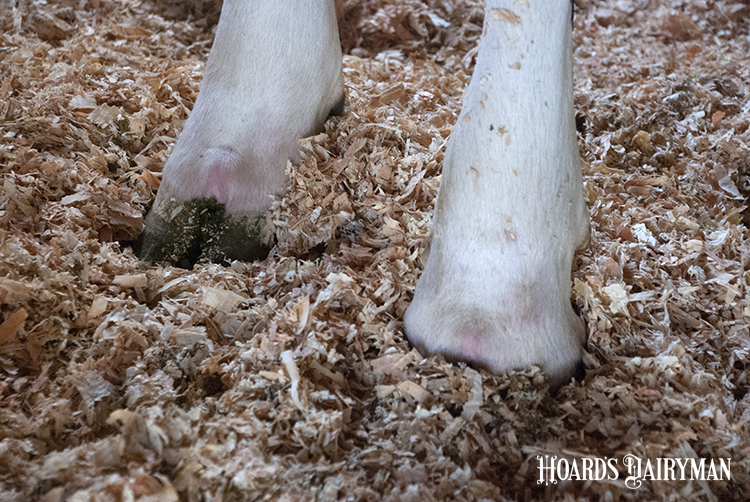
“Lameness is a very broad, complicated disorder,” began Jan Shearer during a Cornell University virtual workshop on understanding and mitigating the condition. To dial in on problems and potential solutions, the Extension veterinarian outlined three categories of lameness issues: claw disorders, foot skin problems, and upper leg lameness, which is often from falls or genetic concerns. The first two areas make up about 95% of lameness cases, he described.
Claw lesions that cause lameness include sole ulcers, white line disease, and traumatic sole lesions, explained Shearer, who works with the Iowa State University College of Veterinary Medicine. “These are the problems that are important for our trimmer to identify for us because having a lot of these can give us different management strategies to look at,” he said. Claw problems can stem from metabolic issues or environmental concerns like hard flooring, excessive wear, and foreign objects lodging in the foot.
He especially advised watching for thin soles, as those can be caused by excessive wear to the foot and lead to toe ulcers. Shearer also noted that abscesses might appear to be a problem in this area, but they require further analysis to fix. “A sole abscess is not a diagnosis but a secondary condition. Is it an ulcer, a puncture, or a white line?” he explained.
Digital dermatitis and foot rot are examples of issues with the foot skin, which are caused by constant exposure to moisture. Digital dermatitis is one of the most common infectious diseases in dairy cattle — with some suggestions that it affects up to 20% of cows — but it is one of the most difficult problems to manage, Shearer admitted.
The raw, red, sometimes wart-like ulcers on the heel develop on the rear feet about 80% of the time, but they aren’t as spontaneous as it may feel. “To go from normal skin to a mature lesion requires, on average, somewhere from 130 to 140 days,” Shearer described, though some will certainly progress faster. “That’s a lot longer than most of us would expect.”
To control the early stages of those lesions when we can’t yet see them, Shearer recommended a 3% formalin footbath. Though this has little effect on mature lesions, it should reduce the prevalence of the disease overall. Treat chronic or mature lesions topically to reduce pain and possibly return the area to normal skin, he continued.
Foot rot may often be easy to observe from a distance if a cow frequently lifts a foot, appears severely lame, or has generalized swelling that may extend to or past the dewclaws. However, Shearer advised not making any assumptions about a swollen foot — pick it up to analyze closer and make sure there’s not a foreign object stuck there.
Close up, foot rot can be identified by a severe necrotic, often foul-smelling, lesion. “This is one that needs our attention early on and needs antibiotics because it is infectious,” Shearer emphasized.
Tools to track
Many dairies may use lameness or locomotion scoring to track hoof and leg health, and a few different scoring systems are available, Shearer noted. No matter what the score delineations, he explained that behavioral indications of lameness include a head bob when walking, a shortened or lengthened stride, and a change in the stance of the stride, how much weight the animal puts on the limbs, or the animal’s willingness to walk.
He described that in one study, arching of the spine was the behavior most correlated with the presence of a lesion. Still, the correlation was only 55%, not 100%, so it cannot be the only factor considered. Shearer stressed a thorough approach to identifying lame cows, and that includes evaluating cows when they are both walking and standing. Often, scoring is only done when the cow is moving, he cautioned.








